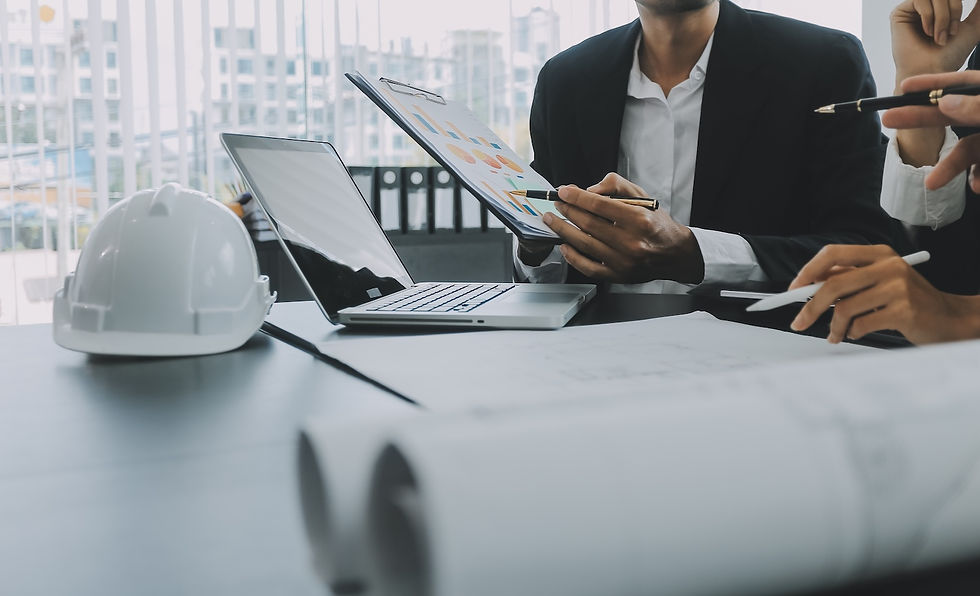Understanding LEED Design and Construction for Building a Greener Future
- zachsievert15
- Jun 25, 2024
- 3 min read
Updated: Jan 20, 2025
If you're passionate about sustainability and eco-friendly buildings, you've probably heard of LEED. But what exactly does it mean, and how can it make a difference in our everyday lives? Let's break down the essentials of LEED design and construction, exploring practical uses and real-life examples that highlight its importance.

What is LEED?
LEED, or Leadership in Energy and Environmental Design, is a certification program developed by the U.S. Green Building Council (USGBC). It's a widely recognized standard for designing, constructing, and operating green buildings. The goal is to promote sustainability and minimize the environmental impact of buildings through various strategies.
Why Should We Care About LEED?
Environmental Benefits
Buildings account for a significant portion of global energy use and greenhouse gas emissions. LEED-certified buildings aim to reduce energy consumption, lower carbon footprints, and conserve water, making a substantial positive impact on the environment.
Economic Advantages
Investing in LEED certification can also be financially beneficial. Energy-efficient buildings often have lower operating costs due to reduced energy and water bills. Additionally, they tend to attract tenants and buyers who are willing to pay a premium for eco-friendly spaces.
Health and Well-being
LEED buildings prioritize indoor environmental quality, ensuring better air quality, natural lighting, and reduced exposure to harmful chemicals. This translates to healthier, more comfortable living and working environments for occupants.
How LEED Certification Works
LEED Rating Systems
LEED certification is available for various building types, including new constructions, existing buildings, homes, and even entire neighborhoods. The certification is based on a points system, where projects earn points across several categories, such as energy efficiency, water conservation, and materials selection.
Certification Levels
The total number of points a project earns determines its certification level:
Certified: 40-49 points
Silver: 50-59 points
Gold: 60-79 points
Platinum: 80+ points
Real-Life Examples of LEED-Certified Buildings
The Bullitt Center
Located in Seattle, the Bullitt Center is often referred to as the greenest commercial building in the world. It features a solar panel-covered roof, a rainwater collection system, and composting toilets. The building is designed to be energy-neutral, generating as much energy as it consumes.
One Bryant Park
In the heart of New York City, One Bryant Park is a testament to sustainable high-rise construction. The building boasts features like a state-of-the-art air filtration system, waterless urinals, and an on-site cogeneration plant that produces electricity and heat.

How to Get Started with LEED
Educate Yourself
Begin by familiarizing yourself with the LEED rating systems and guidelines. The USGBC website offers a wealth of resources, including reference guides, case studies, and online courses.
Hire a LEED Professional
Consider hiring a LEED Accredited Professional (LEED AP) to guide your project. These experts have in-depth knowledge of the certification process and can help you navigate the requirements efficiently.
Work with Certified Contractors
When looking for a reliable partner for your LEED project, consider certified contractors like DesignTek Consulting Group. They have extensive experience in sustainable building practices and can ensure your project meets LEED standards. DesignTek Consulting Group specializes in guiding projects through the LEED certification process, offering expertise in everything from energy modeling to material selection.
Plan and Prioritize
Identify the LEED credits that align with your project goals and budget. It's crucial to incorporate these elements into the design phase to ensure a seamless integration.

The Future of LEED
As awareness of environmental issues continues to grow, the demand for sustainable building practices is expected to increase. LEED certification is not just a trend but a movement towards a more sustainable future. By choosing to build and operate LEED-certified buildings, we can collectively reduce our environmental impact and create healthier, more efficient spaces for everyone.
LEED design and construction offer practical solutions to some of the most pressing environmental challenges we face today. By understanding its benefits and how to implement its principles, we can all contribute to a greener, healthier world. Whether you're a homeowner, a business owner, or just someone interested in sustainability, embracing LEED is a step in the right direction.
For more information on getting started with LEED certification, visit the USGBC website. If you're looking for expert guidance on your LEED project, consider reaching out to DesignTek Consulting Group, a certified contractor dedicated to sustainable building practices. Contact us today!



Comments